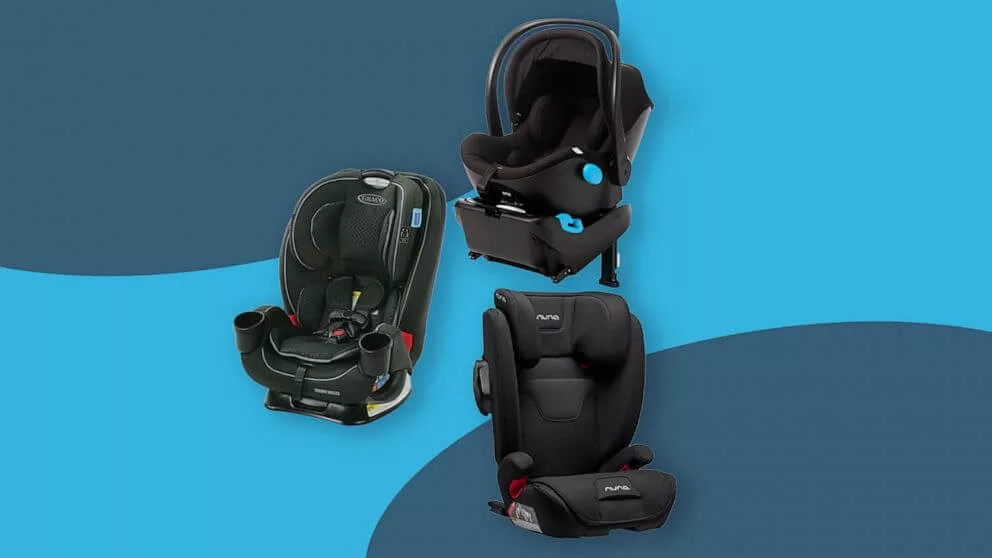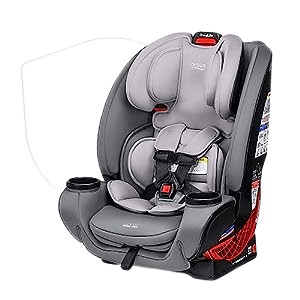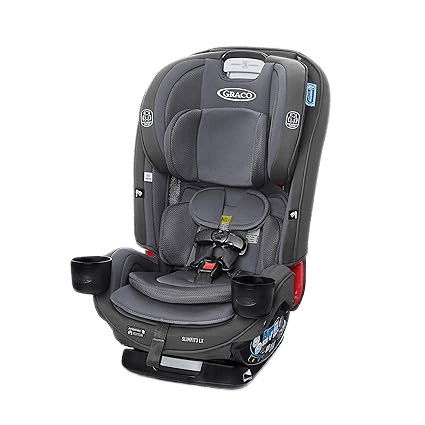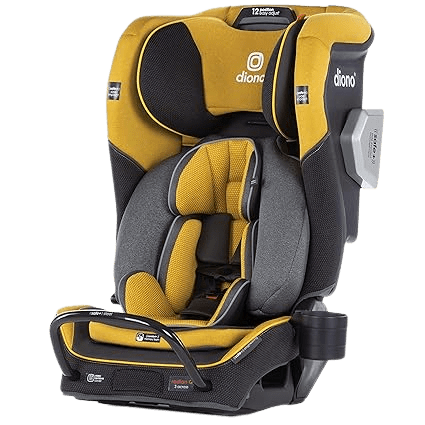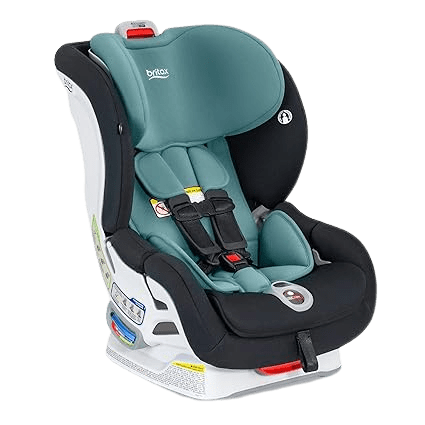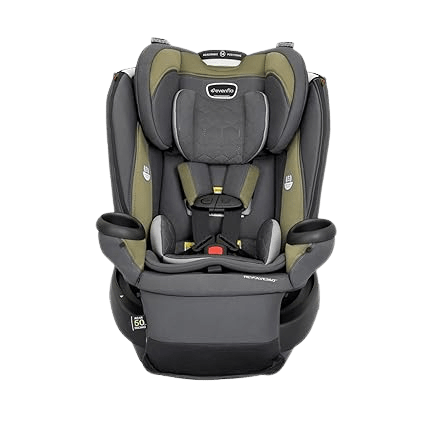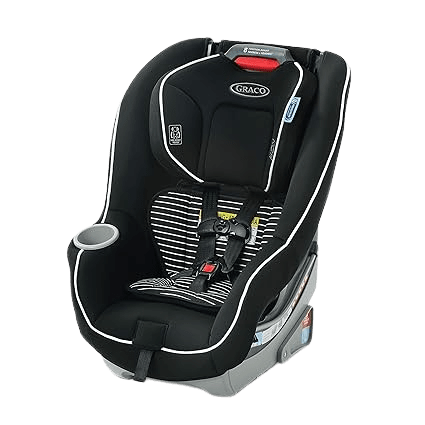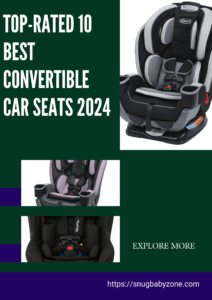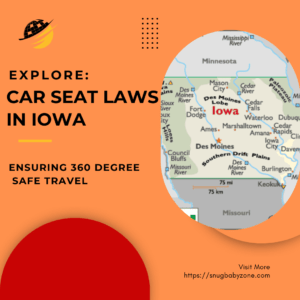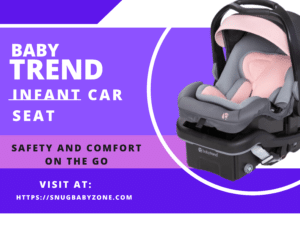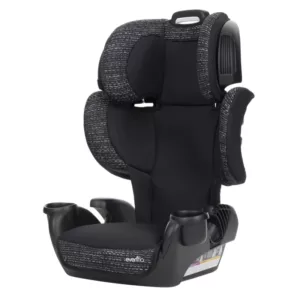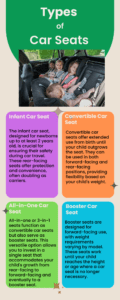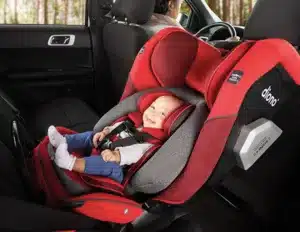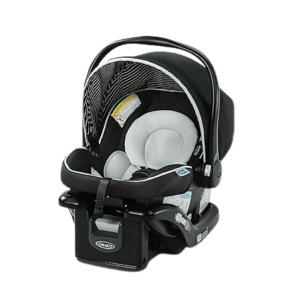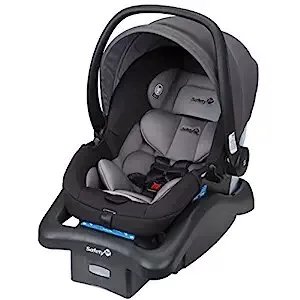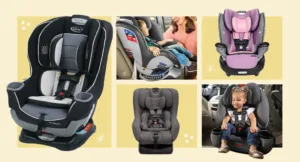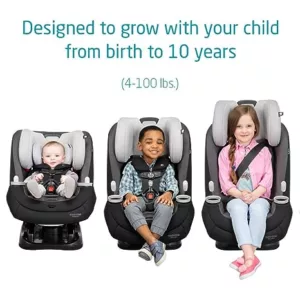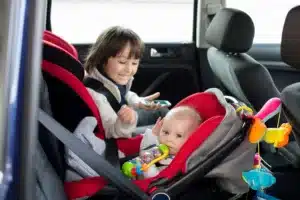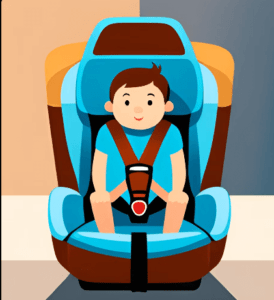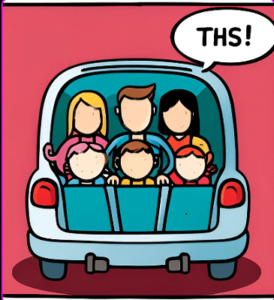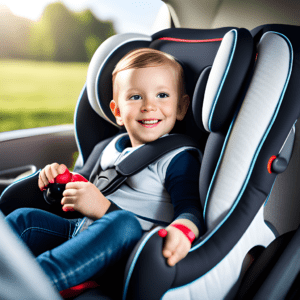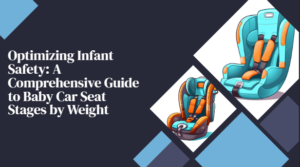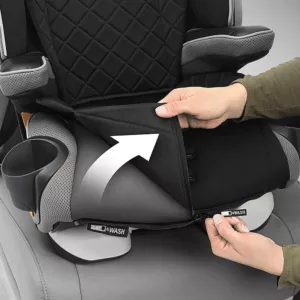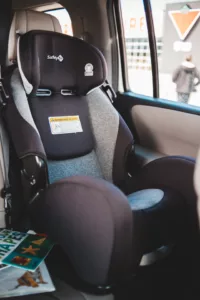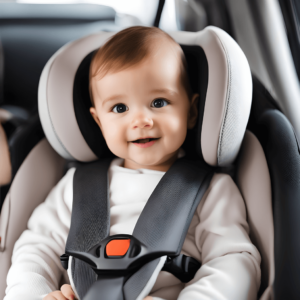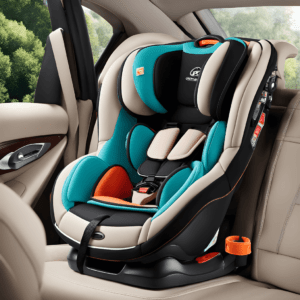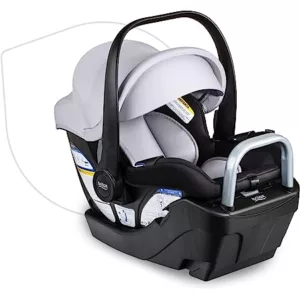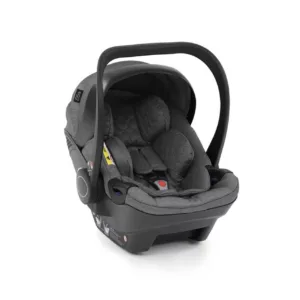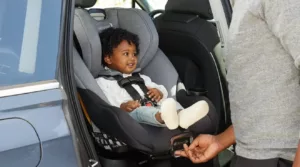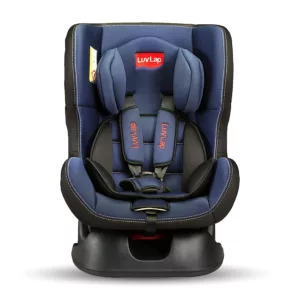Convertible Car Seat Vs. Booster – Discover the top 5 great reasons why convertible car seats are the ultimate choice. Make the right decision today!
Thank you for reading this post, don't forget to subscribe!When it comes to the safety of our children, there are few areas where it matters more than in vehicles. The roads can be unpredictable, and accidents can happen in the blink of an eye. That’s why choosing the right car seat for your child is of paramount importance. In this comprehensive review, we will delve into the world of convertible car seats and booster seats, two essential tools for safeguarding your child while travelling by car.
Table of Contents
ToggleThe Importance of Child Safety in Vehicles – Convertible Car Seat Vs. Booster
Child safety in vehicles is not just a matter of legal compliance; it’s a moral imperative. Each year, thousands of children are involved in car accidents, and sadly, many sustain injuries or worse. Car seats are designed to mitigate these risks by providing the best possible protection in the event of a collision. They are a critical component of responsible parenting and ensuring your child’s well-being while on the road.
Purpose of the Review: Comparing Convertible Car Seats and Booster Seats
In this review, our primary objective is to provide you with a clear and informed perspective on the choice between convertible car seats and booster seats. Both options are designed to keep your child safe, but they serve different purposes, cater to different age groups, and come with distinct features. By the end of this review, You will gain a thorough comprehension of the advantages and disadvantages associated with each category of car seat, enabling you to make an educated decision that prioritizes your child’s safety and comfort. So, let’s set off on this voyage of exploration and revelation to discover the ideal solution for your family’s travel requirements.
Convertible Car Seat Vs. Booster Seat - What is the Difference between a Booster Car Seat and a Convertible Car Seat?
Two common types of child car seats are convertible car seats and boosters. These seats are specially engineered to provide optimal protection for children during car journeys.
What Exactly is Meant by a Convertible Seat?
A convertible car seat is a type of child safety seat that can be adjusted and used in multiple configurations to accommodate a child’s growth and development. It transforms from a rear-facing seat suitable for infants and young toddlers into a forward-facing seat designed for older children, often with a harness system. This flexibility allows parents to use the same car seat for an extended period, making it a cost-effective and practical choice for child safety in vehicles.
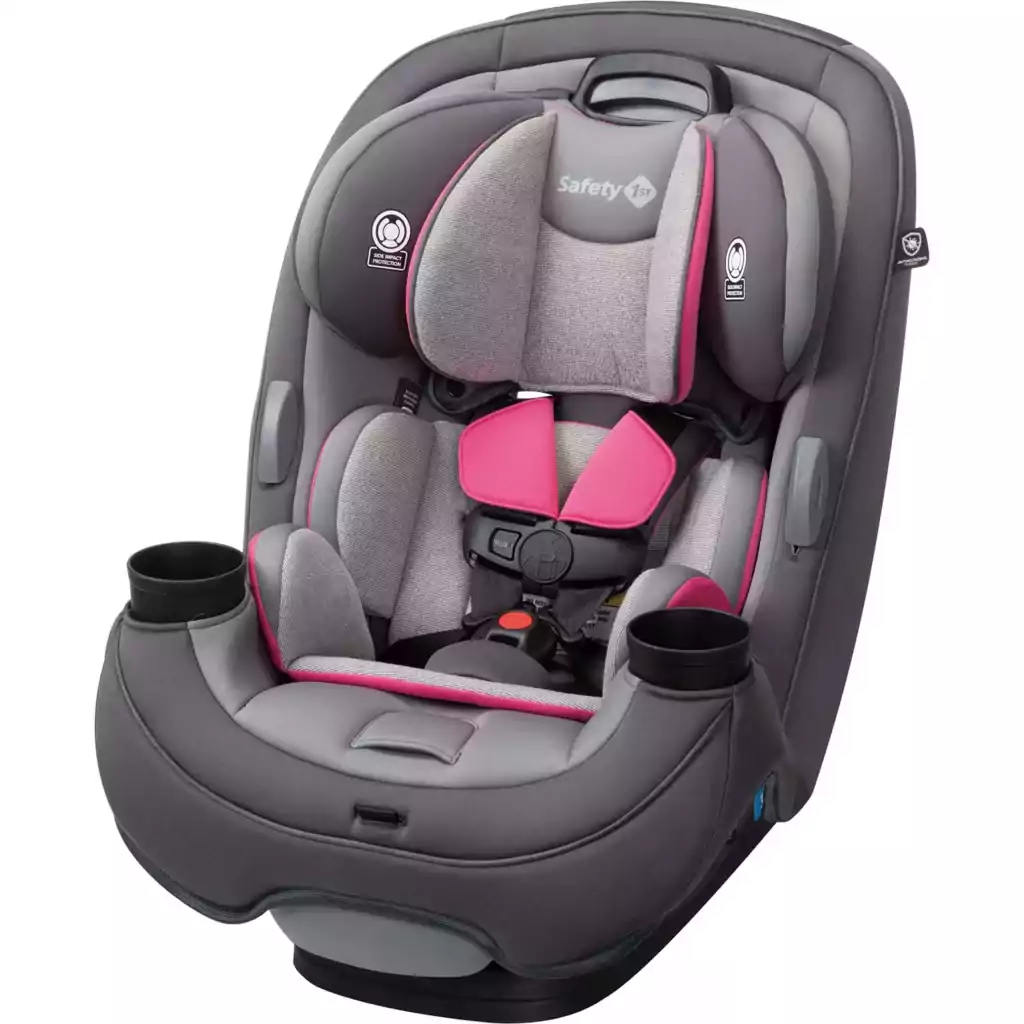
What does the Term Booster Car Seat Refer to?
A booster car seat refers to a specific type of child safety seat designed to elevate a child to the correct height and position in a vehicle’s seat so that the seatbelt fits them properly. It is typically used for older children who have outgrown traditional car seats with harness systems but are not yet tall enough for adult seatbelts to fit them safely. Booster seats help ensure that the seatbelt restrains the child effectively and reduces the risk of injury during a car accident.
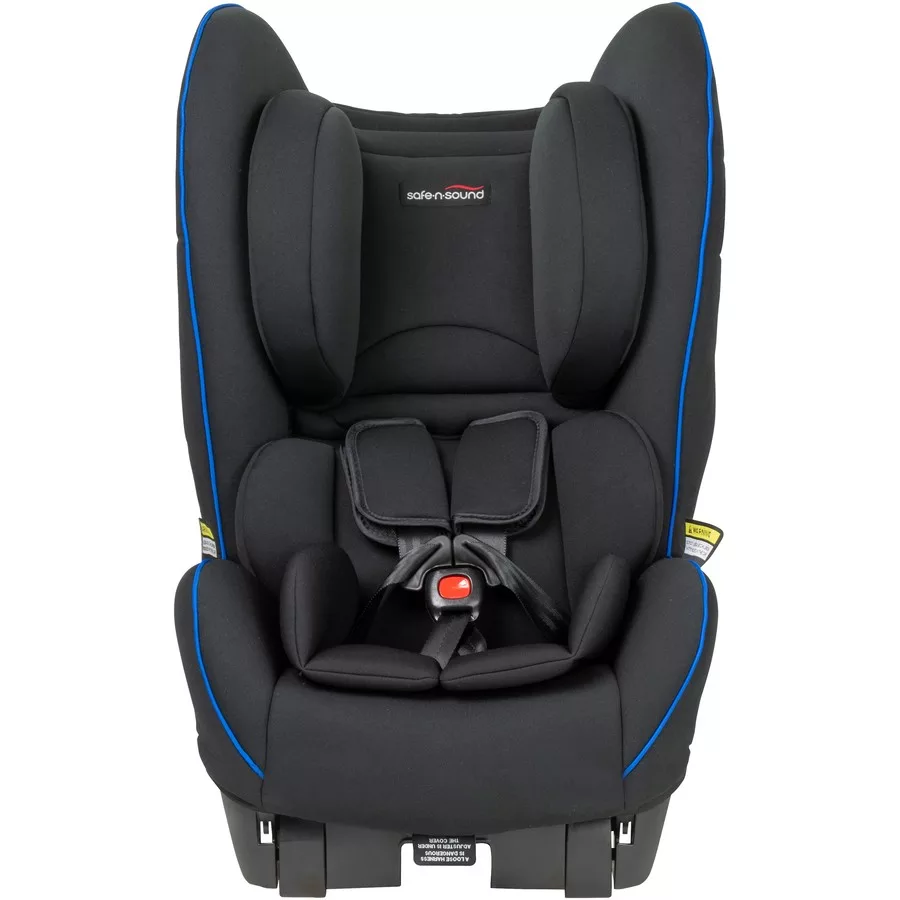
What is the difference between a Convertible Car Seat and a Booster? - Convertible Car Seat Vs. Booster
The features that distinguish a Convertible car seat from a Booster car seat include:
Harness vs. Seatbelt:
Convertible Car Seat: It includes a harness system designed to secure younger children, distributing crash forces evenly across their bodies.
Booster Car Seat: Instead of a harness, booster seats rely on the vehicle’s seatbelt to restrain the child. They position the seatbelt correctly over the child’s body.
Convertible Car Seat: Suitable for infants and young toddlers, often with rear-facing and forward-facing options. Typically accommodates children from birth to preschool age.
Booster Car Seat: Geared toward older children who have outgrown convertible car seats but are not yet ready for adult seatbelts. Crafted with children in mind, usually ranging from 4 to 8 years of age, contingent on their size and level of maturity.
Versatility:
Convertible Car Seat: Offers multiple configurations for rear-facing and forward-facing use, providing a range of options as a child grows.
Booster Car Seat: Primarily serves the purpose of elevating the child to the proper seatbelt height and position, with fewer configuration options.
Safety Features:
Convertible Car Seat: Equipped with safety features such as side-impact protection, reinforced side wings, and energy-absorbing materials.
Booster Car Seat: While some high-back booster seats provide head and neck support, they generally have fewer safety features compared to convertible car seats.
Weight and Height Limits:
Convertible Car Seat: Typically accommodates children up to 40-50 pounds in rear-facing mode and 50-65 pounds or more in forward-facing mode, with height limits around 49 inches.
Booster Car Seat: Weight limits vary widely, often ranging from 40 to 120 pounds, with height limits determined by the specific design of the booster.
In summary, booster car seats differ from convertible car seats by their focus on positioning the vehicle’s seatbelt correctly for older children who have outgrown traditional car seats. They lack harness systems and provide fewer safety features but are essential for ensuring the safe use of seatbelts as children continue to grow.
Convertible Car Seats
Britax One4Life Convertible Car Seat
Customer Review 4.8* | Ratings 4727 | 5 to 120 Pounds |63 Inches Tall | 10 Years of Use | 15 Point Headrest | 5 Point Harness | 9 Recline Positions | PRICE $319
Visit NowGraco SlimFit3 LX 3 in 1 Car Seat
Customer Review 5* | Ratings 45,036 | 5 to 100 Pounds |16.7 Inches Wide | 10 Positions Harness | No-Rethread| No-Rethread Safe Adjust Harness System | PRICE $279
Visit NowDiono Radian 3QXT Convertible
Customer Review 4.5* | Ratings 707 | 5 to 120 Pounds | 10 Years of Use | 12 Point Headrest | THE Original Radian 3 Across | One Hand Easy Adjust | PRICE $359
Visit NowComparing Features of Convertible Car Seat and Booster - Convertible Car Seat Vs. Booster
Making an Informed Choice
Having delved into the fundamental aspects of convertible car seats and booster seats separately, it’s time to delve deeper into the comparison. In this section, we will meticulously analyze these essential features side by side to help you make an informed decision. Whether you’re a new parent searching for the safest option for your infant or a parent of an older child looking for the next step in car seat safety, this comparison will now lead you through the essential factors to take into account. Starting with:
- Safety Features
- Age and Weight Limits
- Installation and Adjustment
- Comfort and Convenience
- Longevity and Cost
- Safety Regulations and Testing
We will provide you with a comprehensive overview to assist you in selecting the most suitable option for your child’s safety and comfort. Let’s begin the comparison journey to ensure your peace of mind when travelling with your little one.
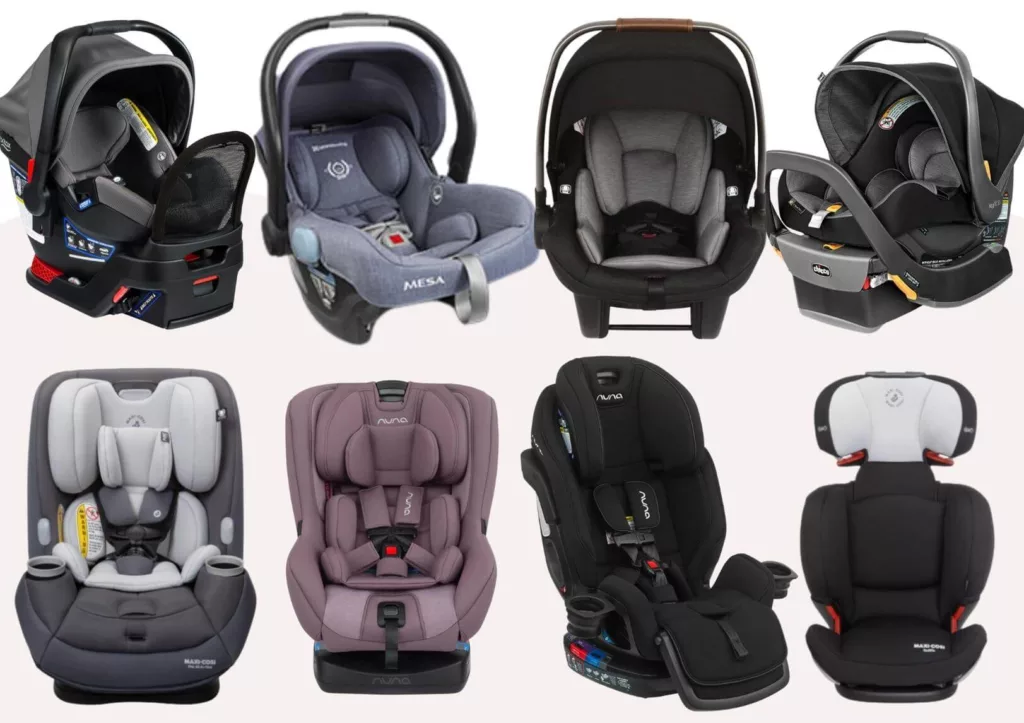
1. Safety Features – Convertible Car Seat Vs. Booster
Convertible Car Seats:
Harness Systems: Convertible car seats are renowned for their integrated harness systems. These harnesses are specifically designed to secure younger children, providing a snug fit and distributing crash forces evenly across the child’s body. This feature minimizes the risk of injury in the event of an accident.
Side-Impact Protection: Convertible car seats typically come equipped with side-impact protection features. These can include reinforced side wings, energy-absorbing foam, or air cushions. These elements act as a shield against side collisions, safeguarding the vulnerable head and torso areas.
Rear-Facing and Forward-Facing Options: One of the standout features of convertible car seats is their versatility. These seats are versatile and can be utilized in both rear-facing and forward-facing positions. Rear-facing mode is especially crucial for infants and toddlers, as it provides enhanced neck and spine support in the event of a crash, minimizing the risk of injury.
Booster Seats:
Seatbelt Positioning: Booster seats, on the other hand, serve as a transitional step for older children who have outgrown traditional car seats. Their primary function is to position the vehicle’s seatbelt correctly on the child’s body. This is essential to prevent injuries caused by improper seatbelt use.
Backless vs. High-Back Boosters: Booster seats come in two main varieties: backless and high-back. High-back boosters offer additional head and neck support, which can be particularly beneficial for children who fall asleep during car rides or those in vehicles with low seatbacks. Backless boosters are more compact and suitable for older kids who no longer need the added head support.
Impact Protection (if applicable): Some booster seats, especially high-back models, may include impact protection features such as energy-absorbing foam or reinforced sides. While these features are not as extensive as those found in convertible car seats, they still offer an extra layer of safety.
Convertible car seats excel in providing comprehensive safety features for infants and young children. They come with harness systems and side-impact protection, and their ability to be used in both rear-facing and forward-facing modes adds to their safety credentials. On the other hand, booster seats are designed to ensure proper seatbelt positioning for older kids, with options for added head and neck support in high-back models. The choice between the two depends on your child’s age, size, and specific safety needs.
2. Age and Weight
Limits – Convertible Car Seat Vs. Booster
Convertible Car Seats:
Convertible car seats are designed to accommodate a range of ages and sizes, making them versatile options for parents. The age and weight limits for convertible car seats can vary by manufacturer and model, but there are common guidelines:
Rear-Facing Mode: Convertible car seats are suitable for infants and toddlers and typically have a rear-facing weight limit of 40 to 50 pounds, although some premium models may have higher limits. Following the guidelines set forth by the American Academy of Pediatrics (AAP),
it is advisable to keep children in a rear-facing position until they are at least 2 years old or until they meet the car seat manufacturer’s specified weight or height limit.
Forward-Facing Mode: Once a child outgrows the rear-facing limits, the convertible car seat can be turned to face forward. The forward-facing weight limit typically ranges from 50 to 65 pounds or more. Additionally, there is usually a height limit, often around 49 inches. Children should remain in the forward-facing position until they reach these limits.
Booster Seats:
Booster seats are explicitly crafted for older children who have exceeded the criteria of convertible car seats but are not yet mature enough to solely. The age and weight limits for booster seats can vary as well:
Backless Boosters: Backless boosters generally have weight limits ranging from 40 to 120 pounds, with a minimum age recommendation of around 4 to 6 years old. However, the suitability largely depends on the child’s height and whether they can sit comfortably with the seatbelt properly positioned.
High-Back Boosters: High-back boosters often have similar weight limits but provide additional head and neck support. They are recommended for children who have outgrown the harness system in convertible car seats but are not yet tall enough for the seatbelt to fit correctly without assistance. These boosters may have age recommendations of 4 to 8 years old or more, depending on the model.
How do These Limits Affect Suitability for Different Age Groups?
Convertible Car Seats: These are ideal for infants and young toddlers due to their rear-facing capabilities, which offer superior head and neck protection. As children grow, the seat can transition to forward-facing mode, accommodating older toddlers and preschoolers. The age and weight limits of convertible car seats make them suitable for children from infancy up to the preschool years.
Booster Seats: These seats cater to older children who have exceeded the age or size limit for convertible car seats but are still not tall enough for adult seatbelts to securely accommodate them. They are typically suitable for children ranging from around 4 to 8 years old, depending on the specific model and the child’s size. Booster seats bridge the gap between car seats and adult seatbelts, ensuring that the seatbelt is positioned correctly over the child’s body, reducing the risk of injury during a crash.
In brief, convertible car seats offer versatility and are appropriate for a broad spectrum of ages and sizes. In contrast, booster seats are designed for older children who have outgrown traditional car seats but are not yet ready for adult seatbelts. The age and weight limits of each type of seat are crucial factors to consider when determining the most appropriate option for your child’s age and size.
3. Installation and Adjustment – Convertible Car Seat Vs. Booster
Convertible Car Seats:
Installation Ease: Convertible car seats are known for their relatively complex installation process. They require securing the seat with LATCH (Lower Anchors and Tethers for Children) or the vehicle’s seatbelt. Rear-facing installation can be particularly challenging due to limited space.
Adjustment Mechanisms: Convertible car seats often feature adjustable harness heights and crotch strap positions to accommodate a growing child. Converting from rear-facing to forward-facing mode can require rethreading the harness, which can be time-consuming.
Additional Tools/Accessories: Installation typically requires the use of LATCH connectors or seatbelt lock-offs, and many models come with built-in level indicators to assist with proper recline angles.
Booster Seats:
Installation Ease: Booster seats are generally easier to install compared to convertible car seats. They do not require harness systems, making them less complex. Backless boosters are especially straightforward to install.
Adjustment Mechanisms: The primary adjustment for booster seats involves setting the headrest or backrest height to ensure proper belt positioning. High-back boosters often have adjustable headrests and armrests for added comfort.
Additional Tools/Accessories: Booster seats typically do not require additional tools or accessories for installation. However, ensuring that the vehicle’s seatbelt is properly threaded through the booster’s guides is essential.
Booster Seats:
Installation Ease: Booster seats are generally easier to install compared to convertible car seats. They do not require harness systems, making them less complex. Backless boosters are especially straightforward to install.
Adjustment Mechanisms: The primary adjustment for booster seats involves setting the headrest or backrest height to ensure proper belt positioning. High-back boosters often have adjustable headrests and armrests for added comfort.
Additional Tools/Accessories: Booster seats typically do not require additional tools or accessories for installation. However, ensuring that the vehicle’s seatbelt is properly threaded through the booster’s guides is essential.
In terms of installation and adjustment, booster seats have an advantage in terms of simplicity. They are generally easier to install and require fewer adjustments than convertible car seats, which can be intricate due to harness systems and convertible configurations. Additionally, booster seats usually do not necessitate extra tools or accessories for installation, making them a more straightforward choice for parents who value convenience and ease of use.
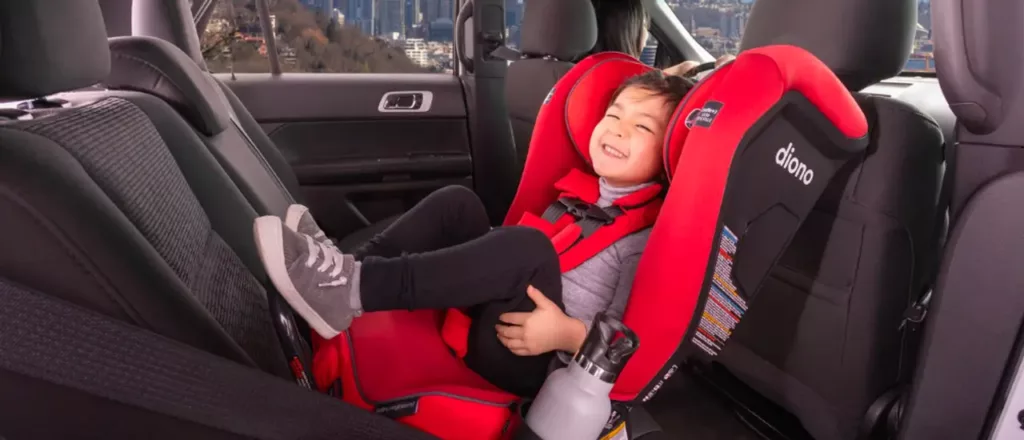
4. Comfort and Convenience – Convertible Car Seat Vs. Booster
Convertible Car Seats:
Comfort Features: Convertible car seats often come with plush padding and ample cushioning to provide a comfortable ride for infants and toddlers. They are designed with ergonomic considerations, including head and body support for younger passengers.
Recline Options: Many convertible car seats offer multiple recline positions, allowing parents to adjust the seat’s angle for optimal comfort and safety. It is particularly beneficial for infants and young children who may need a more reclined position.
Convenience Features: Some convertible car seats include convenient features like machine-washable and removable seat covers, which makes it more convenient to tidy up spills and messes. A few models also come with built-in cup holders or storage pockets to hold snacks, toys, or bottles.
Booster Seats:
Comfort Features: While booster seats do not provide as much padding as convertible car seats, they often have ergonomic designs with contoured shapes to enhance comfort. High-back boosters may offer additional head and neck support.
Recline Options: Booster seats typically lack recline options since they primarily focus on positioning the child for proper seatbelt use. They maintain an upright position to ensure seatbelt effectiveness.
Convenience Features: Booster seats may not have as many convenience features as convertible car seats. However, some high-back booster models include removable, machine-washable covers. Cup holders are a common feature in many booster seats, providing a place for drinks and snacks during travel.
Convertible car seats are generally designed with a strong emphasis on comfort for infants and young children, featuring plush padding and multiple recline options. They also often offer more convenient features, such as removable and washable covers and cup holders. In contrast, booster seats prioritize proper seatbelt positioning and tend to have simpler designs with fewer comfort features. However, high-back booster seats may still offer some level of comfort with contoured shapes and removable covers. The choice between the two will depend on the age and preferences of the child and the convenience features that matter most to parents.
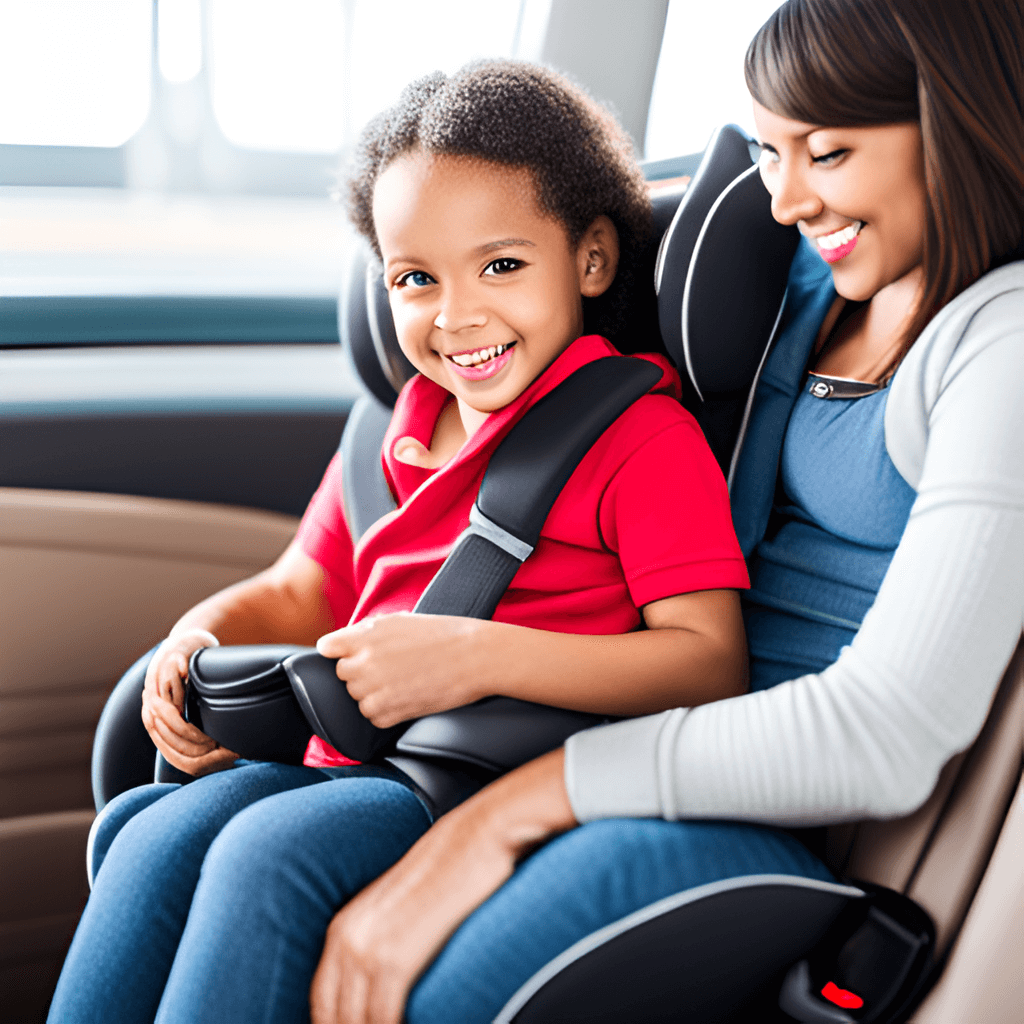
5. Longevity and Cost – Convertible Car Seat Vs. Booster
Convertible Car Seat: Lifespan
In general, convertible car seats tend to outlast booster seats in terms of lifespan. They are designed to accommodate children from infancy through toddlerhood and often have higher weight and height limits in both rear-facing and forward-facing modes. Some premium models can even be used for several years.
Booster Seat: Lifespan
Booster seats have a shorter period of use since they primarily cater to older children who have outgrown convertible car seats. Once a child is ready for adult seatbelts without assistance, the booster seat is no longer necessary.
Convertible Car Seats: Cost
Convertible car seats typically have a higher initial purchase price compared to booster seats due to their extended functionality, safety features, and the ability to accommodate younger children. However, considering their longer usability, they often offer good long-term value.
Booster Seats: Cost
Booster seats are generally more affordable in terms of the initial purchase price. They are a cost-effective choice for parents with older children who have already outgrown their convertible car seats. However, because of their shorter period of use, parents may need to replace them sooner when children grow taller and no longer require boosters.
In terms of longevity, convertible car seats have the advantage, as they can be used from infancy through toddlerhood and even beyond in some cases. Booster seats, on the other hand, have a shorter period of use since they cater to older children. When considering cost, convertible car seats typically come with a higher initial purchase price, but their extended usability often provides better long-term value. Booster seats are more budget-friendly upfront but may require replacement sooner as children grow taller and transition to adult seatbelts. The choice between the two should consider your child’s age, size, and how long you plan to use the car seat.
Convertible Car Seats
Britax Boulevard Click-Tight Convertible
Customer Review 4.8* | Ratings 1459 | 5 to 65 Pounds |49 Inches Height | Click Tight Installation | Sleek and Modern Design | 5 Point Harness | 14 Recline Positions | PRICE $349
Visit NowEvenflo Revolve360 Extend All-in-One
Customer Review 4.7* | Ratings 1006 | 4 to 65 Pounds |57 Inches Height | Revolve 360 | 10 Year of Use | Quick Clean Cover | 5 Point Harness | 14 Recline Positions | PRICE $399
Visit NowGraco Admiral 65 Convertible Car Seat
Customer Review 4.8* | Ratings 3372 | 4 to 65 Pounds | Graco Protect Plus Engineered | Hassle free installation | 8 Position Headrest| 5 Point Harness | 8 Recline Positions | PRICE $169
Visit Now6. Safety Regulations and Testing – Convertible Car Seat Vs. Booster
Convertible Car Seats: Safety Regulations and Testing Standards
Convertible car seats, like all child safety seats, must meet stringent safety regulations and testing standards in the region where they are sold. In the United States, for example, car seats are mandated to adhere to the Federal Motor Vehicle Safety Standard. (FMVSS) 213.
Booster Seats: Safety Regulations and Testing Standards
Similarly, booster seats are subject to safety regulations and testing standards in their respective regions. These standards focus on ensuring that booster seats correctly position the vehicle’s seatbelt on the child to minimize injury risk during a collision. In the United States, FMVSS 213 also applies to booster seats, specifying requirements for their design and performance.
Convertible Car Seats: Recalls and Safety Concerns
Convertible car seats, like all child safety seats, may be subject to recalls if safety issues are identified post-market. These recalls can be related to defects, structural weaknesses, or other safety concerns. Parents should regularly check for recalls and register their car seats with the manufacturer to receive notifications about recalls.
Booster Seats: Recalls and Safety Concerns
Booster seats can also be subject to recalls for similar reasons. Safety concerns or defects that arise after the product is on the market may lead to recalls. Parents need to stay informed about recalls and follow any manufacturer’s instructions regarding affected models.
Both convertible car seats and booster seats must adhere to stringent safety regulations and undergo thorough testing to ensure their effectiveness in safeguarding children in the event of car accidents. In the United States, FMVSS 213 is a key standard for both types of seats. Parents should always check for recalls and safety concerns related to their specific car seat models, as manufacturers take safety seriously and issue recalls when necessary to address potential risks or defects. Staying informed about recalls and following safety guidelines is crucial for ensuring the ongoing safety of your child while travelling in a car seat.
Pros and Cons – Convertible Car Seat Vs. Booster
Certainly, below is a side-by-side comparison of the advantages and disadvantages of convertible car seats and booster seats, conveniently presented in a table for quick reference:
Aspect | Convertible Car Seats | Booster Seats |
Pros | ||
Extended Use | Suitable from infancy to toddlerhood | Primarily for older children |
Versatility | Rear-facing and forward-facing options | Positions seatbelt correctly for children |
Safety Features | Advanced safety features, e.g., harness systems, side-impact protection | Focus on proper seatbelt positioning |
Comfort | More padding and comfort for younger children | Adequate comfort with contoured designs |
Long-Term Value | Higher initial cost, but extended usability | Budget-friendly option with lower initial cost |
Ease of Use | Challenging installation, especially in rear-facing mode | Easier installation and adjustment |
Portability | Bulky and less portable | Lightweight and portable for travel |
Transition | Suitable for transitioning to booster seats | Simplifies the transition to adult seatbelts |
Aspect | Convertible Car Seats | Booster Seats |
Cons | ||
Limited Portability | Bulkier and less portable | More portable and suitable for travel |
Shorter Lifespan for Some Models | May have weight or height limits for larger children | Intended for older children who have outgrown car seats |
Fewer Comfort Features | Less padding and comfort for older children | Limited comfort features for younger children |
Reduced Safety Features | Some advanced safety features may be lacking | Provides safety through proper positioning |
Potential for Improper Use | Installation challenges and adjustments required | Proper use relies on the child’s maturity and willingness |
- Convertible car seats do not typically transform into booster seats; they serve as separate child safety seat types designed for different stages of a child’s growth.
- Convertible car seats and booster seats are distinct and intended for specific age, weight, and height ranges.
- When transitioning from a convertible car seat to a booster, consider the child’s age, weight, height, and the manufacturer’s guidelines.
- Booster seats are designed to position the vehicle’s seatbelt correctly for older children who have outgrown harness systems in convertible car seats.
- Always prioritize safety and adhere to the manufacturer’s instructions when making the switch between car seat types.
Do Convertible Car Seats Turn into Boosters?
Convertible car seats do not typically transform into booster seats; they serve as separate child safety seat types designed for different stages of a child’s growth.
Convertible car seats and booster seats are distinct and intended for specific age, weight, and height ranges.
When transitioning from a convertible car seat to a booster, consider the child’s age, weight, height, and the manufacturer’s guidelines.
Booster seats are designed to position the vehicle’s seatbelt correctly for older children who have outgrown harness systems in convertible car seats.
Always prioritize safety and adhere to the manufacturer’s instructions when making the switch between car seat types.
When Should the Transition from a Convertible Car Seat to a Booster Seat Occur?
The decision to switch from a convertible car seat to a booster seat should be based on the child’s age, weight, height, and the specific recommendations provided by the car seat manufacturer. Here are some general guidelines:
Age: Children are generally recommended to stay in a convertible car seat until they reach the manufacturer’s specified maximum height or weight limits for forward-facing use. It is usually around 2 years old or older.
Weight and Height: Convertible car seats have weight and height limits for both rear-facing and forward-facing modes. Children should transition to a booster seat when they exceed the maximum limits for forward-facing use and are at least 4 years old. Booster seats are created for children who have exceeded the harness system requirements but are still not sufficiently tall for adult seatbelts to fit them properly.
Read the Manufacturer’s Guidelines: Always follow the manufacturer’s guidelines for your specific car seat model. These guidelines will provide clear instructions on when it’s time to transition to a booster seat.
Consider the Child’s Maturity: In addition to meeting the height and weight requirements, it’s essential to consider the child’s maturity and willingness to sit properly in a booster seat. Children should be able to sit with their backs against the vehicle seat, their knees should be bent, resting at the seat’s edge, and their feet should be flat on the floor.
Remember that safety should be the top priority, and it’s crucial to follow the manufacturer’s recommendations and your local safety regulations when moving from a convertible car seat to a booster seat.
Conclusion - Convertible Car Seat Vs. Booster
In this comprehensive review, we’ve explored the critical aspects of convertible car seats and booster seats, aiming to provide parents and caregivers with a clear understanding of their differences, advantages, and considerations. Here are the key takeaways:
Convertible Car Seats vs. Booster Seats: Convertible car seats are versatile and designed to accommodate infants and young children, offering both rear-facing and forward-facing options. Booster seats, on the other hand, are intended for older children who have outgrown harness systems and focus on correctly positioning the vehicle’s seatbelt.
Safety First: Both types of seats are subjected to rigorous safety regulations and testing standards. Convertible car seats often come with advanced safety features, while booster seats prioritize proper seatbelt placement.
Age and Weight Limits: Convertible car seats have extended use and are suitable for infants through toddlerhood. Booster seats are for older children, typically aged 4 to 8, who have outgrown convertible seats but are not yet ready for adult seatbelts.
Installation and Adjustment: Convertible car seats can be challenging to install, especially in rear-facing mode, and may require adjustments as the child grows. Booster seats tend to be simpler to install and make adjustments to.
Comfort and Convenience: Convertible car seats provide more comfort features for younger children, while booster seats offer simplicity and convenience for older kids.
Longevity and Cost: Convertible car seats have a longer lifespan but often come with a higher initial cost. Booster seats are budget-friendly initially but may require replacement sooner.
Insights and Recommendations:
For Infants and Young Children: Start with a rear-facing convertible car seat, following the manufacturer’s guidelines for height and weight limits. Ensure the child remains rear-facing until they reach these limits, typically around 2 years old.
For Toddlers and Preschoolers: Transition to forward-facing in the convertible car seat as long as they fit within the seat’s limits. Continue to use this seat until they outgrow it.
For Older Children (around 4 to 8 years old): Consider transitioning to a booster seat when the child exceeds the convertible car seat’s limits. Choose a high-back or backless booster seat based on the child’s size and maturity.
Always prioritize safety by adhering to the manufacturer’s guidelines and local safety regulations. To receive recall notifications, make sure to register your car seat with the manufacturer.
The choice between a convertible car seat and a booster seat depends on the child’s age, size, comfort needs, and safety considerations. Starting with a rear-facing convertible car seat for infants and transitioning through stages as they grow is a prudent approach to ensure their safety and comfort during car travel.
Final Thoughts – Convertible Car Seat Vs. Booster
The author’s recommendation between convertible car seats and booster seats is not explicitly stated, as the choice between these two types of car seats depends on various factors, including the child’s age, weight, height, and specific needs. The author underscores the significance of choosing the appropriate car seat, taking into account these individual factors, to guarantee the child’s safety and comfort during car journeys.
The key takeaway is that both convertible car seats and booster seats have their advantages and are designed for different stages of a child’s growth. The recommendation is to carefully assess the child’s stage of development and follow the manufacturer’s guidelines to make an informed decision that prioritizes safety.
Frequently Asked Questions – Convertible Car Seat Vs. Booster
The two types of booster seats are high-back booster seats and backless booster seats:
High-Back Booster Seats:
High-back booster seats have a backrest and headrest, providing support and protection for the child’s head and neck.
Backless Booster Seats:
Backless booster seats lack a backrest or headrest and feature a more straightforward design.
No, it is generally not recommended for a 3-year-old to sit in a booster seat. Booster seats are typically designed for older children who have outgrown convertible car seats with a harness system but are not yet tall enough for adult seatbelts to fit them properly.
Yes, backless boosters can be safe when used correctly and in the appropriate circumstances. However, their safety largely depends on the child’s age, weight, height, and the specific vehicle they are being used in.
The safety of a booster seat depends on various factors, including the child’s age, weight, height, type of vehicle, and how well the booster seat is installed and used. The two primary kinds of booster seats include high-back boosters and backless boosters. The safety of each type can vary depending on the specific circumstances.
Related Resource:
